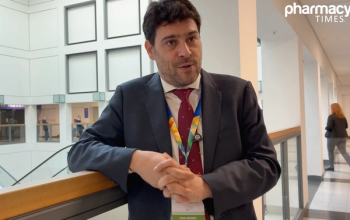
Current GLP-1 Agonists for the Treatment of T2D
Experts distinguish between available GLP-1 agonist therapies for the management of type 2 diabetes, comparing the options by dosage and administration requirements, and safety and efficacy data.
Troy Trygstad, PharmD, MBA, PhD: Dhiren, there are a lot of GLP-1 [glucagon-like peptide-1] agonists now in the marketplace. If I was to survey the products that are available, how do I mix and match, or how do I distinguish between them?
Dhiren Patel, PharmD, CDE, BC-ADM, BCACP: That’s a problem that pharmacists have, and so do providers. There are almost 6 to 7 within 1 class. And then you think about all the different diabetes classes that exist, 12 or 13 classes, and you can see why it becomes confusing. So why don’t we quickly run down some of the options that we have? I’ll kind of go through it with the molecules. So we have exenatide, which was 1 of our first ones and has kind of morphed over the years. The first one that came out was a twice-a-day injection. That went by the brand name Byetta. And then they’ve kind of improved on it as the years have gone by. They had it as a once-weekly option, and that was Bydureon. They’ve also now put that into an auto-injector called Bydureon BCise. But again, you’re dealing with the same molecule with different formulations. But that was your first one.
For once-daily we have lixisenatide, which is brand name Adlyxin. You typically don’t see it by itself. It’s usually with a basal insulin, but that’s out there. We have liraglutide, which most folks know goes by Victoza. So those are your 2 once-daily options. And then some other once weeklies that we have include dulaglutide, which goes by Trulicity. We have albiglutide, for which Tanzeum is no longer made. That has been discontinued because of market share purposes. So we have the whole continuum, from ones that were twice a day all the way to once weekly right now. We won’t talk about the pipeline, but there are some others that they’re trying to improve on further—so longer duration.
Jessica L. Kerr, PharmD, CDE: And then the newest—Ozempic, or semaglutide.
Dhiren Patel, PharmD, CDE, BC-ADM, BCACP: Thank you.
Troy Trygstad, PharmD, MBA, PhD: So you’ve got an array of options out there. What distinguishes the newer one from the rest?
Susan Cornell, PharmD, CDE, FAPhA, FAADE: You know, I think 1 of the ways to look at GLP-1s is to look at it almost like insulin. We have basal-bolus insulin, but we also have basal bolus/GLP-1s. Dhiren mentioned, of course, exenatide, the original Byetta, which was truly a bolus/GLP-1. Lixisenatide (Adlyxin) is a bolus/GLP-1. What that means is that it targets the postprandial glucose, and it is very important to stress that it must be taken before a meal.
And so from an administration standpoint and patient education, we follow up with our patients. “When are you taking this medication?” Even though lixisenatide is once daily, it is still in the short-acting category or the bolus category. Then, when we look at the once weekly, needless to say, those are basal/GLP-1s because they’re long-acting. And of course liraglutide (Victoza), even though it’s once daily, is a long-acting option. So it covers more of the fasting glucose with residual on the postprandial. I think it’s important to look at it from that standpoint.
Dhiren Patel, PharmD, CDE, BC-ADM, BCACP: And the other point that Troy mentioned is, what’s the difference between having Ozempic, which is sixth, seventh to market, versus the others? I don’t think they are all created equal. I’m from the school of thought that some GLP is better than no GLP. But at the end of the day, they’re not all created equal. So out of the ones that we have, they’ve all gone through what we call a cardiovascular outcomes trial, because it’s an FDA-mandated thing that started after 2008 because of the Avandia and the rosiglitazone fiasco. And so, all these trials, or all these medications that we just mentioned, have all had their own unique trials. And kind of the CliffsNotes version of it is, out of the ones that are currently on the market that have completed the trial, the one that has the cardiovascular data is liraglutide, which is Victoza; and semaglutide. Depending on how you look at it, this also has some cardiovascular data.
The others were shown to at least not worsen cardiovascular risk, so they were neutral in their findings. They didn’t harm, from a cardiovascular standpoint, like Avandia did. And so, they were not protective, but they didn’t harm. They were just neutral, in terms of impact from a cardiovascular standpoint.
Troy Trygstad, PharmD, MBA, PhD: In a free clinic, it might be somewhat determined on availability.
Susan Cornell, PharmD, CDE, FAPhA, FAADE: Exactly.
Troy Trygstad, PharmD, MBA, PhD: In a VA [Veterans Affairs hospital], it might be somewhat determined by formulary.
Dhiren Patel, PharmD, CDE, BC-ADM, BCACP: Contracts.
Troy Trygstad, PharmD, MBA, PhD: Contracts. If I go in to my primary care provider in Chapel Hill, [North Carolina], they’re looking at me and are asking what? If it’s this and then that, what does that differential look like?
Susan Cornell, PharmD, CDE, FAPhA, FAADE: It’s still formulary-based because, obviously, most medical offices are still following a formulary. But it goes back to the guidelines. One of the interesting things with the guidelines is, as you mentioned, they are very prescriptive. If you’re looking at the cardiovascular data, it’s prescriptive of looking at liraglutide as your first-line option. Whereas if you’re looking for weight-loss potential, then it’s semaglutide as a first-line option. So depending on what you’re trying to accomplish, the guidelines actually are very specific regarding which drug you should be using. But the bottom line is, it goes back down to the formulary and what your insurance company is paying for.
Jessica L. Kerr, PharmD, CDE: And it could even go down to, what problem does the patient need fixed? Do they need improvement with their postprandial blood glucose? And maybe that’s where you go back to the exenatide, immediate release, or obviously with lixisenatide. But I think it also can go down to thinking about their A1C percent lowering as well. Because when you look at those bolus type of GLP-1s, they’re probably only going to give us a 0.5% to 0.8%, maybe a 1% reduction. When we’re looking at the longer duration of GLP-1s, we’re looking at 0.8% to up to 1.8%, depending on which trial or formulation you’re using.
Newsletter
Stay informed on drug updates, treatment guidelines, and pharmacy practice trends—subscribe to Pharmacy Times for weekly clinical insights.






















































































































































































































